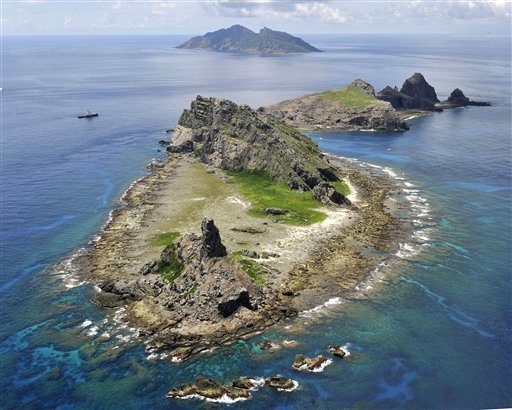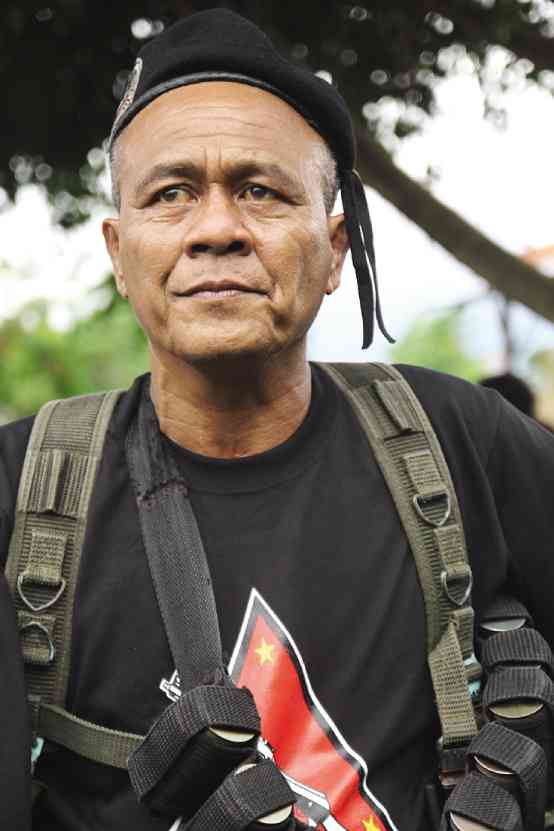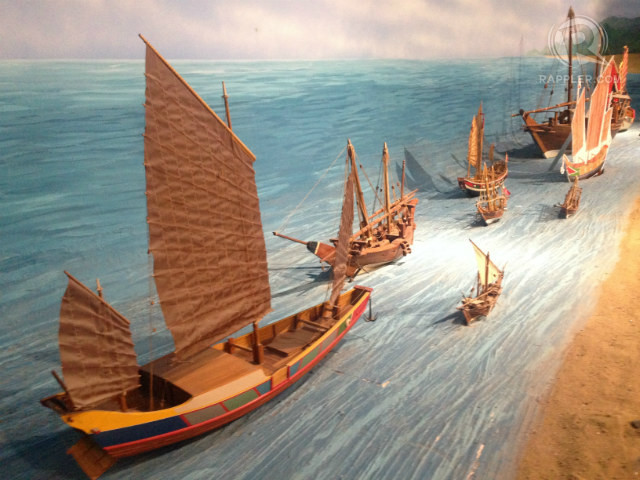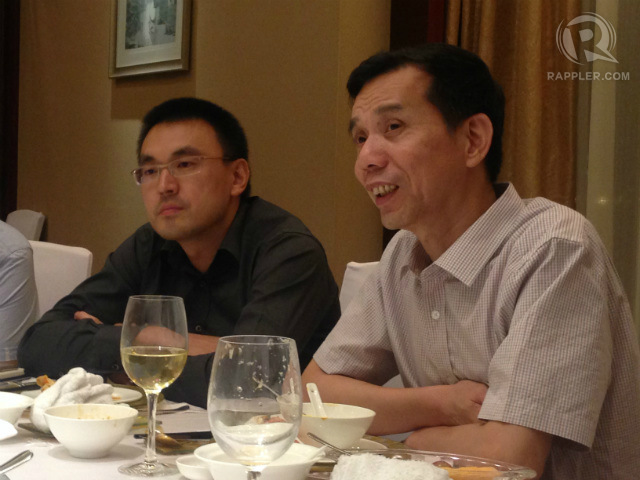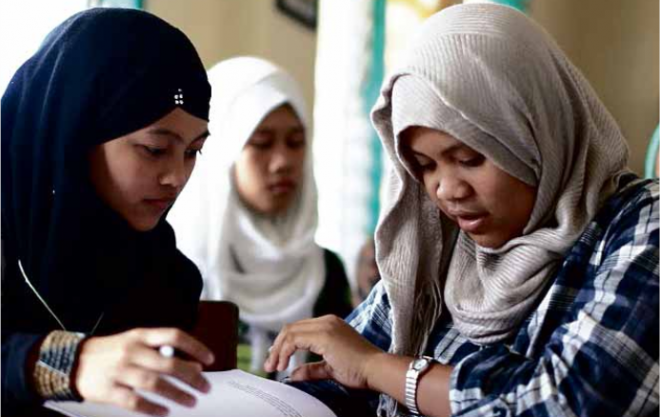
WOMANPOWER When My Peace started in Marawi City, there was hardly any participating female student, but that changed dramatically as the months passed. “With this program, we provide Mindanao youth access to the world,” said Andrew Kelly of the US Embassy in Manila which funded the program. JIGO RACAZA/CONTRIBUTOR
On June 5, 16-year-old Shoaib Shamsoddin stood in front of an assembly of madrassa, or Islamic school, students from all over Mindanao and began to chant a passage from the Koran.
Wearing traditional Muslim clothes, he threw his deep, musical voice across the hall, the well-enunciated “h’s” and “f’s” and “k’s” of the Arabic words punctuating his prayer, asking God for forgiveness, seeking atonement for mistakes by offering good deeds.
While Waib, as friends call the prayer leader, clearly deserved the perfect scores he consistently got in his Arabic class, this assembly was a thanksgiving for an answered prayer: learning the English language.
“When we study hard, by the grace of God, we manage to get 100 percent in some of our subjects. But despite our best efforts, we could not ace our English class,” Waib, who studies at the Jamiatu Muslim Mindanao at Darussalam, Matampay, Marawi City, admitted after the ceremony. “That’s why we are very happy to be in this program and learn English in a fun, exciting way.”
Pioneering program
Just as the new school year got under way, Waib and 88 other students from Zamboanga City and the Lanao provinces gathered here for graduation from a pioneering English-language learning program called Madrassa Youth Promoting English Advancement for Community Empowerment (My Peace).
My Peace was divided into four modules: grammar, parts of speech, pronunciation and reading.
“We made sure that learning would be fun,” said Dr. Edralin C. Manla of the School of Education at Xavier University-Ateneo de Cagayan in Cagayan de Oro City.
Manla headed the My Peace module-writing team, which included three educators from Marawi City and another two from Zamboanga City.
She said: “We made sure that each class would have the four A’s—activity, analysis, abstraction and application.
“For instance, when we introduced nouns, we began with an activity, the Name Game. The students would sit in a circle and they would take turns enumerating names of persons or places or things that begin with certain letters of the alphabet under time constraint.
“It was a thrilling game that drew in the whole class’ participation. Afterward, we did an analysis by asking the students why they found the game easy or difficult.
“The abstraction would be the class proper, and we would tell the students that the names they enumerated in the game were actually nouns, an important part of speech.
“At the end of the session, we would have presentations, outputs, and oral activities that would serve as an application of the day’s learning.”
When the modules were ready, the module writers facilitated the teachers’ training.
Think Thomasites
More than 60 teachers volunteered for My Peace, many of them graduates of US government exchange programs.
In her address to fellow My Peace graduates, Fatima Jihan, 12, from the Sarang Bangun Learning Center in Newslane, Baliwasan, Zamboanga City, quoted the Prophet Muhammad, saying, “Seeking knowledge is obligatory for all Muslims.”
Resplendent in a fully beaded gown, she said their journey did not end with the graduation ceremony that evening. “Our journey has just begun,” she said in flawless English.
As a demonstration of the graduates’ English-language proficiency, they went in front of the assembly and recited Edgar Allan Poe’s “The Bells” in a mesmerizing manner, mining the poem’s musicality.
“The Philippines is our oldest ally in Asia,” said Andrew Kelly of the US Embassy in Manila, which funded the program.
“When we first came here more than a hundred years ago, the Thomasites began to teach English in the Philippines,” he said. “Today, English is the language of business and commerce, new technology, and international relations. Through My Peace, we encourage young people to learn English and provide them with access to the world.”
Peace and stability
Kelly, who was in Davao for the first time to personally hand over to the pioneering My Peace graduates their certificates of completion, said, “Peace and stability in Mindanao make for a healthier Philippines. And that is important to us.”
Five of the 10 poorest provinces in the country are in Mindanao. Topping the list is Lanao del Sur, whose capital is Marawi City, considered the Islamic City of the Philippines, and home to a number of influential madaris (plural of madrassa).
According to the Department of Education (DepEd), 17 of the 30 “illiterate barangays” in the country are in Mindanao.
“Poverty as well as lack of quality education and other life skills preparation make the youth in conflict-affected areas of Mindanao vulnerable and at great risk,” said community worker Rodel Tan Roa, coordinator of the My Peace program.
Roa, who is also the founder and executive director of the Naawan HELPS-Communities Inc., the main partner of the US Embassy for this project, explained that madrassa education is a fundamental aspect of Muslim life in the Philippines.
“Madaris are mostly privately owned and focus on Arabic language and Islamic values, often pushing aside English, math, and science. Integrating Islamic education into the public school system has faced challenges, including the lack of resources.
The My Peace project seeks to address this gap by providing English-language instruction to Muslim youth in a culturally appropriate manner,” Roa said.
My Peace rolled out in July last year in Marawi City and Zamboanga City.
The participants selected were between 15 and 21 years old and “their English proficiency level was zero or, at most, Grade 2 level,” Roa said.
During the year of My Peace sessions, Waib looked forward to weekends, when he and his 18-year-old brother, Hassanodin (better known as “Odin”), would ride in the van that would take them and the other students from Marawi City to Iligan City, an hour away down the coast.
They would spend the night there, together with the other students so they could focus on their English study.
Adventure with prepositions
Waib said, “It was like an adventure. We had new classmates. There were new teachers for every session. They kept on asking us if we were OK, if we understood the lessons, if we had any questions.
“We played a lot of games. I touched a computer for the first time and learned how to work on it. There was no boring moment.
“Once, I was sad because I really could not understand prepositions. But the teacher came to me and cheered me up. She said prepositions sometimes link words and establish relationships of thought, and she linked our hands and we began to dance like children, and suddenly I was happy.”
Waib and Odin did not grow up in Marawi City. They said that they have the same address as Hashim Salamat, the founder of the Moro Islamic Liberation Front (MILF): Tugaig, Barira, Maguindanao. The place is better known as the site of the former MILF stronghold, Camp Abubakar.
They said their father, Shamsoddin, and their mother, Marian, both farmers, had five children.
Odin remembered that it was lunchtime when the bombing began at Camp Abubakar a few years back.
He said there were many houses that were on fire. Their family fled the camp.
Odin said that by the time they reached their cousins’ house in Cotabato, he was running a high fever.
Change for the better
Odin and Waib said life was difficult and they wanted to change their lives for the better. And that was why their parents sent them off to the Islamic school in Marawi City.
They rent a room in a house in the town center. Odin lets his younger brother sleep on the bed and he sleeps on a thin foam on the floor. Their only appliances in the room are a rice cooker and a pitcher-like water heater.
They wake up at 4 a.m. to clean up then go out and walk to the nearby mosque, where they join the community for the 4:30 a.m. prayer.
When they return home, the rice would already be cooked and the two would sit down for what they call “sacrifice eating,” their meal consisting only of steamed rice.
Once in three months, their mother comes for a visit and she brings chicken and fried fish. When they have extra money, Odin goes to the street and buys chicken feet to go with their rice.
The two boys admitted, though, that more often than not, they would eat rice before going off to the prayers. “It is difficult to pray when you are hungry,” Waib said. “You cannot focus.”
When they graduated from the My Peace program on June 5, Odin said, “I now have a Facebook account. I created it during one of the My Peace sessions. And I have many Facebook friends.”
Waib said, “I made new friends, too. I learned a lot. The world is a big place. There are so many experiences. And I am happy.”
Reward from Allah
Grade 8 student Fatima Jihan from Zamboanga City graduated with Waib. They were both My Peace awardees, each receiving a brand-new multimedia tablet.
Fatima said, “The past 10 months have been a fruitful learning experience. Our English classes were very enjoyable.
“Our teachers, many of whom have been to the US, inspired us with their American accents and their cheerfulness.
“But they also taught us entrepreneurial skills. We cooked and fed many madrassa students. We went to the sea and planted mangroves.
“It was my first time to plant a tree. It felt great to be of help. It is not all about studying but about doing one’s share for the greater good.
“Surely, there is a reward from Allah.”
Unexpected reward
For My Peace student Sittie A. Dima, 17, the reward came unexpectedly.
For many months, she traveled from her home in Poblacion in Tangcal, Lanao del Norte, to attend the My Peace sessions in Iligan City.
Roa said, “Her hometown is 16 km up the sawmill from Kolambugan town on the highway. It is one of the interior towns in the province. The road is bumpy and dusty, and when it rains
“There seems to be no government presence. There is no public water system. They cut trees for a living—logs, firewood. It would seem like a godforsaken place.
“When I went there to pay my respects to the community and invite them to the My Peace project, I met Commander Batman of the MILF. He was happy that his town was included in My Peace.”
How to use a mouse
Sittie did not mind the tiring travel to the monthly sessions. She said, “I enjoyed our classes. I learned a lot. My favorite was working on the computer. I did not know one can do research using the computer. When I did not know what a word meant, I just checked out the dictionary on the computer. I began to love computers.”
The My Peace program gave the Tangcal community two desktop computers through Sittie.
“My parents, who are farmers, built a cabinet so we could store the computers for safety,” Sittie said. “The other two students from my town who were also with My Peace also own the computers.
“My house is beside the Army detachment, so we agreed to keep the computer in my house. Together, we teach our friends and schoolmates how to work on the computer. Microsoft Word, Powerpoint, even how to use a mouse.
“Now, people come to the house and ask us to encode their letters of application and biodata, and we earn a little income from such things.
“I want to help my family. I want to help my siblings finish their studies. I used to be shy. But through the My Peace activities, now I am not afraid to meet people and talk to them. I want to be an uztad and teach Arabic.”
Roa is pleased with the way things turned out. He said, “I am happy we were able to empower the youth for equal opportunities. We were able to change their outlooks. We were able to help them change themselves and their communities. We were able to wage the peace. That is the most important thing of all.”
Looking to the future
The brothers Odin and Waib said they needed to focus. When they finish their studies at the Jamiatu Muslim Mindanao, they will be considered “sanawi” (graduates) and can go back to their hometown and become “imam” (priests) if there is no imam in the community. Or they can be invited by an incumbent imam to be his assistant.
If they do well in school, they can pursue further studies abroad. They can study Shariah law in Saudi Arabia and on their return they will be “alim,” or doctors, as opposed to “uztad,” or local graduate.
The ultimate would be to become “mufti,” the revered master who has the sole discretion to decide on the prayer schedule.
In Marawi City, after the early-morning prayer, the prayers are held at noon, 3 p.m., 6 p.m., and 7 p.m.
By 6:50 a.m., the Shamsoddin brothers are off to school in their polo shirts and khaki pants and arrive in class at 7:30 a.m
http://newsinfo.inquirer.net/702726/muslim-students-find-learning-english-can-be-fun

